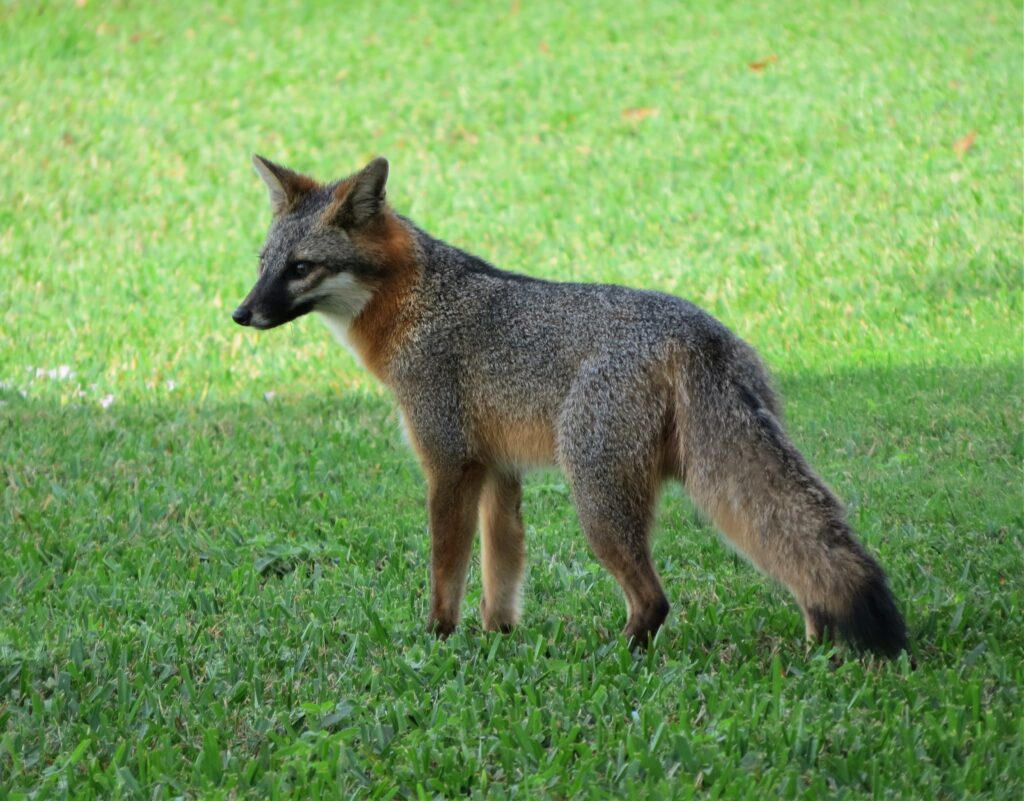
Common Name: Grey Fox
Scientific Name: Urocyon cinereoargenteus
Conservation Status: Least Concern (Roemer, et al., 2016).
Habitat: Deciduous/southern pine forests interspersed with some old fields and scrubby woodlands, mixed agricultural/woodland/chaparral/riparian landscape, shrub habitats, thick brush, forested montane habitats, semi-arid areas, and margins of some urban areas (Hall, 1981; Eisenberg, 1989; Harrison, 1997; Castellanos, et al., 2008).
Range: Southern edge of central and eastern Canada, Oregon, Nevada, Utah, and Colorado in the United States to northern Venezuela and Colombia; and from the Pacific coast of the United States to the Atlantic and Caribbean oceans (Roemer, et al., 2016).
Diet: Small vertebrates such as cottontails, mice, woodrats, and cotton rats; fruit such as California palm fruit and nuts; invertebrates such as grasshoppers, beetles, butterflies, and moths; carrion (Vu, 2011).
Threats: Canine distemper virus; Habitat loss, fragm,entation, and degradation due to increasing human habitation (Roemer, et al., 2016).
